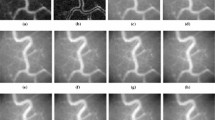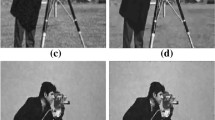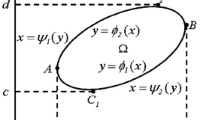Abstract
In this study, we discuss mainly the image denoising and texture retention issues. Usually, the time-fractional derivative has an adjustable fractional order to control the diffusion process, and its memory effect can nicely retain the image texture when it is applied to image denoising. Therefore, we design a new Rudin-Osher-Fatemi model with a time-fractional derivative based on a classical one, where the discretization in space is based on the integer-order difference scheme and the discretization in time is the approximation of the Caputo derivative (i.e., Caputo-like difference is applied to discretize the Caputo derivative). Stability and convergence of such an explicit scheme are analyzed in detail. We prove that the numerical solution to the new model converges to the exact solution with the order of O(τ2−α+h2), where τ, α, and h are the time step size, fractional order, and space step size, respectively. Finally, various evaluation criteria including the signal-to-noise ratio, feature similarity, and histogram recovery degree are used to evaluate the performance of our new model. Numerical test results show that our improved model has more powerful denoising and texture retention ability than existing ones.
Similar content being viewed by others
References
Abirami A, Prakash P, Thangavel K, 2018. Fractional diffusion equation-based image denoising model using CN-GL scheme. Int J Comput Math, 95(6–7):1222–1239. https://doi.org/10.1080/00207160.2017.1401707
Bai J, Feng XC, 2018. Image denoising using generalized anisotropic diffusion. J Math Imag Vis, 60(7):994–1007. https://doi.org/10.1007/s10851-018-0790-4
Bergounioux M, Piffet L, 2010. A second-order model for image denoising. Set-Valued Var Anal, 18(3–4):277–306. https://doi.org/10.1007/s11228-010-0156-6
Blomgren P, Chan TF, Mulet P, et al., 1997. Total variation image restoration: numerical methods and extensions. Proc Int Conf on Image Processing, p.384–387. https://doi.org/10.1109/ICIR1997.632128
Bredies K, Kunisch K, Pock T, 2010. Total generalized variation. SIAM J Imag Sci, 3(3):492–526. https://doi.org/10.1137/090769521
Knoll F, Bredies K, Pock T, et al., 2011. Second order total generalized variation (TGV) for MRI. Mag Reson Med, 65(2):480–491. https://doi.org/10.1002/mrm.22595
Podlubny I, 1998. Fractional Differential Equations. Academic Press, Cambridge, USA.
Rosen JB, 1961. The gradient projection method for nonlinear programming. Part II. Nonlinear constraints. J Soc Ind Appl Math, 9(4):514–532. https://doi.org/10.1137/0109044
Rudin LI, Osher S, Fatemi E, 1992. Nonlinear total variation based noise removal algorithms. Phys D, 60(1–4):259–268. https://doi.org/10.1016/0167-2789(92)90242-F
Vogel CR, 2002. Computational Methods for Inverse Problems. SIAM, Philadelphia, USA.
Wu GC, Baleanu D, Bai YR, 2019. Discrete fractional masks and their applications to image enhancement. In: Băleanu D, Lopes AM (Eds.), Applications in Engineering, Life and Social Sciences, Part B. De Gruyter, Berlin, Boston, p.261–270. https://doi.org/10.1515/9783110571929
Zhang L, Zhang L, Mou XQ, et al., 2011. FSIM: a feature similarity index for image quality assessment. IEEE Trans Imag Process, 20(8):2378–2386. https://doi.org/10.1109/TIP.2011.2109730
Author information
Authors and Affiliations
Corresponding author
Additional information
Compliance with ethics guidelines
Xing-ran LIAO declares that he has no conflict of interest.
Project supported by the National Natural Science Foundation of China (Nos. 61772434 and 61932006)
Rights and permissions
About this article
Cite this article
Liao, Xr. An improved ROF denoising model based on time-fractional derivative. Front Inform Technol Electron Eng 21, 856–865 (2020). https://doi.org/10.1631/FITEE.2000067
Received:
Accepted:
Published:
Issue Date:
DOI: https://doi.org/10.1631/FITEE.2000067




